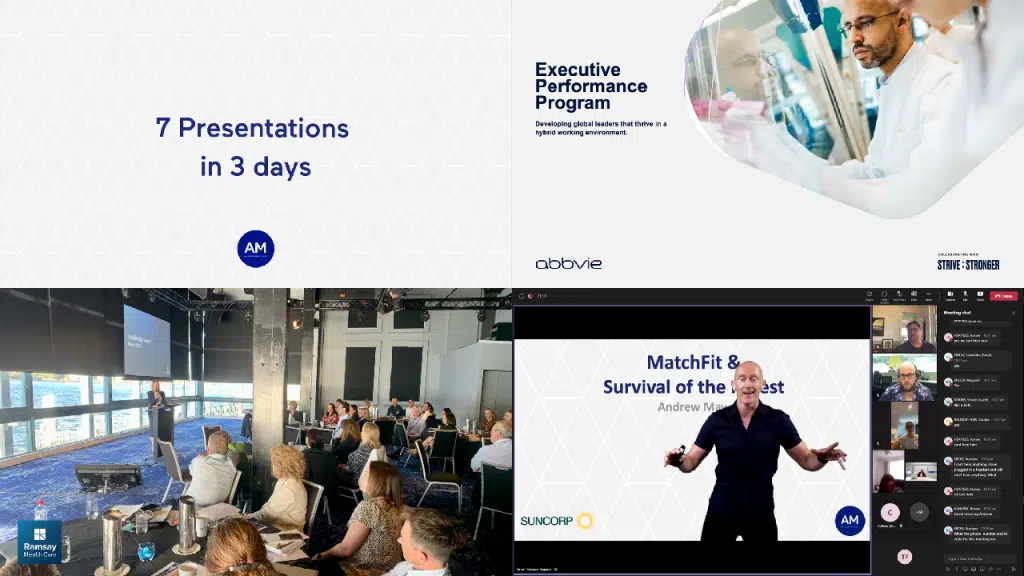Calm is contagious.
Chaos is too.
Right now is more important than ever for leaders to strike a balance between being calm and compassionate and being driven and directive.
This article explores specific lessons from the military, hospitals and critical care, and business to provide specific examples of how to be calm in chaos, and several examples of what not to do.
- Military
The US Navy SEALs must, by necessity, be as agile as they are vigilant as resting on their laurels or moving too slowly does not simply result in failure, it can result in death. Combining the non-reactive quality of vigilance with the need for fast action requires resilience and adaptability; two qualities leaders must cultivate and refine in the current situation we find ourselves in.
Brent Gleeson is the CEO of Taking Point Leadership and a former Navy SEAL. Gleeson understands that successful transition through chaos ultimately comes down to culture – strong
culture creates resilience and, when it is aligned with strategy, can be relied upon in times of change and creates the unity needed to act quickly.
“Companies that keep culture at the top of the priority list – especially when leading change – typically outperform their competitors in areas such as consistent growth, improved speed and efficiency, employee engagement and retention, customer satisfaction and profitability.”
Gleeson acknowledges the reality that “organizational change can suck”. SEAL Teams, however, simply “embrace the suck”. Embracing the suck, he explains, looks like this:
“We lean into the misery and push our comfort zones on a daily basis. Fear and what I refer to in the book as “change battle fatigue” can stall any change effort. But there are some tools to mitigate that fear and keep the team fired up.
“First, we go back to having a powerful and aligned vision for a brighter future. Something the team can be excited about. Second, we have to include the majority (if not all) of the team at all levels in the planning process – grooming that buy-in. Third, identifying and celebrating quick wins is imperative for showing visible progress and keeping the team energized. Fourth, the story-telling process must last from beginning to end so everyone can continue to connect with the vision – even when things get tough.”
Harry Wendt, the Digital Director at StriveStronger is the former general manager for digital at Westpac and also trained in the military in aviation.
Working in financial services at a time when he was required to navigate the unchartered territory of cyber-crime, Wendt drew on lessons he learned from the military.
“One of the things I clearly remember being taught in multi-engine aircraft was that in an emergency, your first reaction should be to ‘sit on your hands”’ he says. “This approach doesn’t mean you don’t need to react quickly. Still, many people have died shutting down the wrong engine in an emergency because they act too swiftly without correctly identifying which engine has failed in the heat of the moment.”
What it means is finding the balance between the urgency to act and the need to gather enough information to act intelligently.
”Put simply knee-jerk reactions usually kill people but taking too long to make a decision can also end up in the same place,” says Wendt, who likens the approach to the famous Einstein quote: “If I had an hour to solve a problem, I’d spend 55 minutes thinking about the problem and five minutes thinking about solutions.”
“Einstein believed the quality of the solution you generate is in direct proportion to your ability to identify the problem you hope to solve.”
- Hospitals and critical care
It is not until we are pushed to extremes that we really get to learn about performance. Dr Tom Buckley, Strive Stronger Research Director, has worked in the medical system for 25 years and has unique insights about maintaining health, wellbeing and productivity during a crisis.
“Many high functioning medical and nursing teams prepare for the unexpected using the principles of Crisis Resource Management (CRM)”, Buckley explains. “CRM is a set of non-technical skills that help a team be effective in a crisis. CRM originated with Crew (or ‘Cockpit’) Resource Management training developed by the aviation industry in the 1970s and was initially adopted into anesthesiology training in anticipation for unexpected events in the surgical room. Since then it is used in many medical and nursing curricular in anticipation of clinical or situational emergencies.”
The main principles of CRM are to:
- Clearly define leadership
- Have situational awareness
- Anticipate the next step
- Have clear, closed-loop communication
- Distribute workload and allocate attention to tasks of importance.
CRM during a crisis is essential because:
- In times of stress human performance usually degrades
- Analysis of poor performances reveals that lack of leadership, poor team coordination, cognitive fixation and poor communication are to blame in many cases.
- Barriers to good communication and coordination are largely due to structural and organisational issues than anything specifically related to individual knowledge or judgement.
“Prevention of poor performance requires these barriers to be surmounted by good communication technique, clear leadership, situational awareness and a shared mental model,” Buckley says. “In addition, during a crisis, techniques of cross monitoring (i.e. being aware of each other’s performance strengths and weakness and being willing to assist in the accomplishment of a task become paramount.”
The principles of CRM are applicable to any business crisis, where it is easy to get derailed and lose situational awareness, where there is uncertainty about what is the next correct step, and where communication breakdowns in focussing attention on the problem, rather than the solution.
“In a medical emergency situation, the general principle is to do an easy assessment and then instigate early interventions. In response to the evolving COVID-19 virus, many businesses are also undertaking rapid assessments and implementing early interventions to keep business going,” Dr Buckley says “what is important though is that once the initial critical steps have been taken, businesses need to undertake a more comprehensive assessment of the situation and plan for the medium and longer-term, especially planning for the unknown or unexpected.”
“The COVID-19 virus has become the ultimate societal disrupter of our times. It is important we learn from this situation and future-proof; It may very well be that this is the catalyst for a more productive way of working into the future, one that does not require employees to be chained to a desk for 8 hours a day in the one place”.
- Business world
Let’s take a look at two examples of what not to do during a crisis.
In March 2018, when it was revealed that the personal information of millions of Facebook users was compromised Mark Zuckerberg was silent for four days. By the time he finally responded, claiming he wanted to get to the bottom of that breach first, the horse had bolted. Chaos and misinformation were rife, his employees and the users of the platform were angry and upset and had lost confidence in Zuckerberg as a leader.
Donald Trump. Oh, dear, there are just so many examples where I had to just go with the most recent.
Trump’s handling of the COVID-19 crisis has been universally panned as he denied, deflected and contradicted himself and statements from other White House officials. As a leader, he ought to be creating comfort and stability. Instead, he has caused confusion, added to the spread of misinformation and has potentially put the health of millions of Americans at risk because of his failure to act quickly. “To soothe his own ego, he quite literally is willing to make Americans sick,” The Washington Post said.
On the flip side, two recent examples of strong leadership amidst the COVID-19 global epidemic are Qantas and Telstra.
Alan Joyce responded early by cutting back flights, as well as executive wages and bonuses.
Andy Penn also moved swiftly and reduced the ambiguity by mobilising 20,000 Telstra employees to work from home before most other organisations were told they have to.
With change, comes opportunity
John F. Kennedy said: “The Chinese use two brush strokes to write the word “crisis”. One brush stroke stands for danger; the other for opportunity. In a crisis, be aware of the danger, but recognise the opportunity.”
In any time of crisis, there are two ways to look at the problem. You need to effectively deal with the immediate “danger”, but also recognise that in any crisis there is also opportunity. It is a bit like a cup half empty, cup half full way of thinking.
Remember:
Calm is contagious.
Chaos is too.
What are you going to choose?
Andrew May





